How You Can Get Rid of Rats In Your Chicken Coop
- January 30, 2024
- 0 comment
Having raised chickens for many years, I am intimately familiar with the persistent struggle against rat infestations in chicken coops. These unwanted intruders can create significant disruptions, endangering the health of your chickens and compromising the cleanliness of the coop environment.

In this detailed review, I aim to share my journey and insights gained from dealing with this common problem. I will explore a range of strategies that I have employed to combat these rodents, assess their effectiveness, and discuss the critical factors that influenced my decision-making process in choosing the most suitable methods for maintaining a safe and healthy space for my chickens.
List of How To Get Rid of Rats In Chicken Coop:
Understanding Rats: The Enemy in the Coop
Gaining a deep understanding of why rats are drawn to chicken coops is a fundamental step in effectively managing their presence. At the core of this issue, it’s the search for food and shelter that drives rats towards these structures.
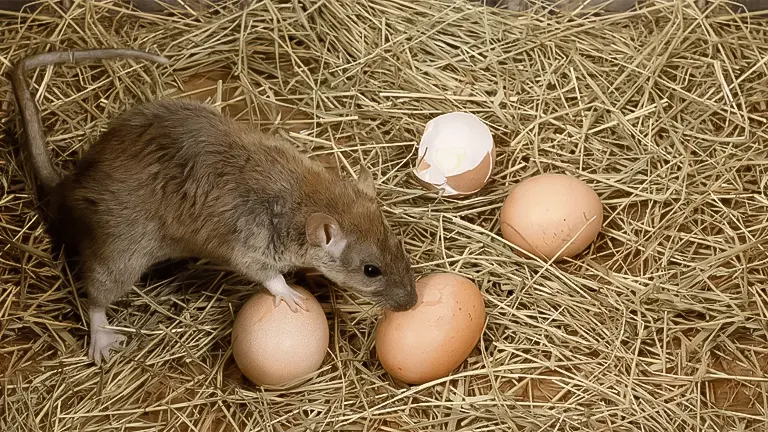
Chicken coops present an ideal environment for these rodents, offering a plentiful supply of chicken feed which serves as a constant food source. Additionally, the availability of water within these enclosures provides the necessary hydration they require.
Beyond these necessities, chicken coops also offer a warm and secure refuge, particularly during the colder months. This combination of readily available nutrition, water, and a cozy habitat makes chicken coops a highly attractive destination for rats.
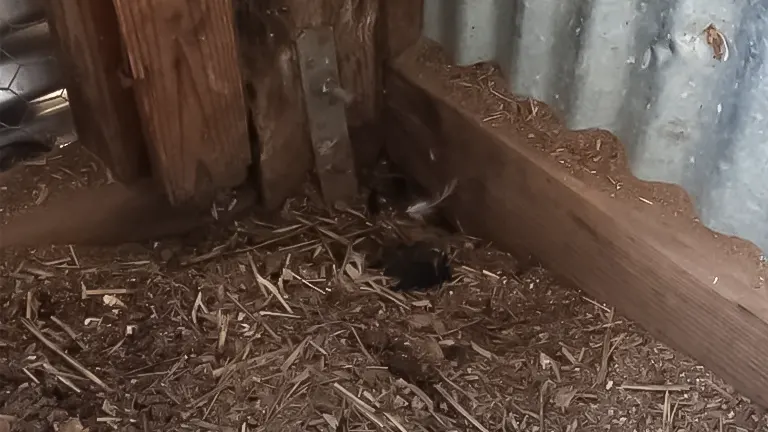
Understanding these attractions is crucial for devising effective strategies to deter these pests, as it involves addressing the very elements that draw them in. This knowledge forms the foundation for implementing measures that target the root of the problem, thereby creating a less inviting environment for rats and safeguarding the health and well-being of the chickens.
Methods of How To Get Rid of Rats In Chicken Coop
Method 1: Tightening Coop Security
Tightening the security of a chicken coop is an essential strategy in the battle against rat infestations. This method revolves around meticulously inspecting and reinforcing the structure of the coop to prevent any rat entry. The key lies in identifying and sealing off all potential entry points, no matter how small, as rats can squeeze through surprisingly tiny gaps.
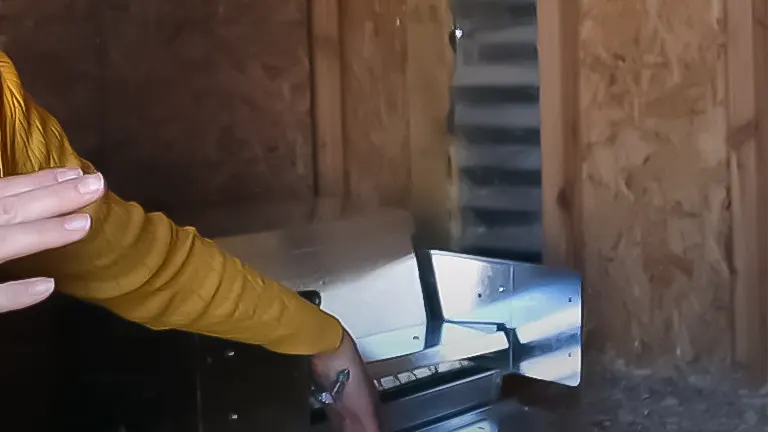
To achieve this, I recommend using hardware cloth with a fine mesh, as it is much more durable and resistant to gnawing than regular chicken wire. Covering all windows, vents, and other openings with this material ensures that rats cannot chew their way in. Additionally, it’s crucial to reinforce the coop’s foundation. Burying hardware cloth a foot or so into the ground around the coop can deter rats from burrowing underneath.
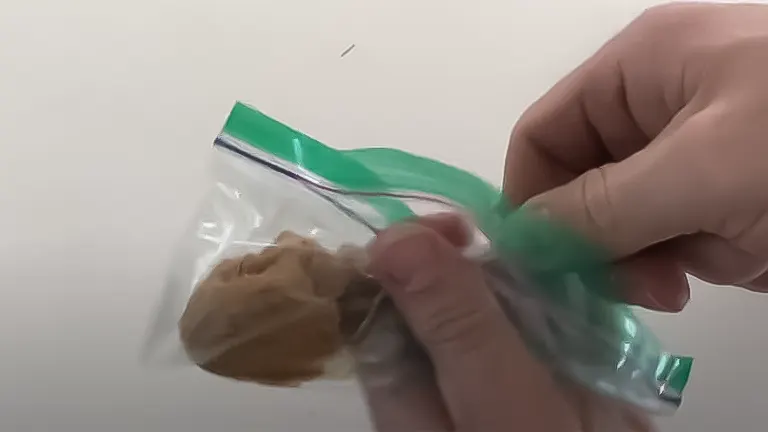
Regular maintenance is also a part of this strategy; checking for and repairing any damage to the coop promptly is vital. This approach is humane and does not harm the rats, focusing instead on creating a fortress-like environment that is impenetrable to these pests. By securing the coop in this manner, not only do we keep the rats out, but we also ensure a safe and hygienic environment for the chickens to thrive in.
Pros
Prevention is better than cure. Sealing off any small openings and reinforcing the coop structure is essential. I used hardware cloth (not chicken wire, as rats can chew through it) to secure all openings. This method is humane and long-term.
Cons
It’s labor-intensive and might not be 100% foolproof if rats already have established routes into the coop.
Method 2: Trapping
Trapping is a direct and effective approach in the management of rat infestations in chicken coops. This method involves the strategic placement of various types of traps around the coop and in areas where rat activity is most prevalent. In my experience, snap traps have proven to be particularly efficient. They are easy to set up and can be baited with foods that are attractive to rats, such as peanut butter or small pieces of fruit.
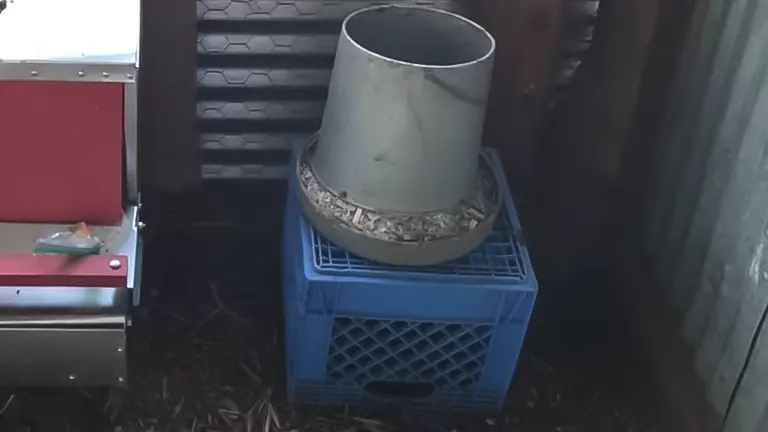
The key to successful trapping is in the placement: traps should be set along the walls or near known rat paths, as rats tend to travel along edges. It’s important to use a sufficient number of traps and to check them regularly – ideally every day – to remove any caught rats and to reset the traps. While trapping is effective, it requires ongoing effort and commitment. It’s a hands-on method that may not be suitable for everyone, particularly those who are uncomfortable with handling rodents, alive or deceased.
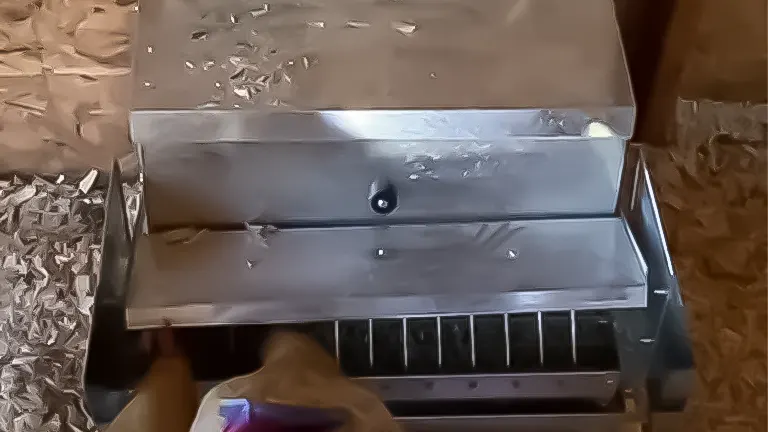
Additionally, while traps can significantly reduce the rat population, they do not address the root cause of the infestation, such as access to food or shelter. Therefore, trapping is often most effective when used in conjunction with other methods, like tightening coop security, to provide a comprehensive solution to the rat problem. Safety is another important consideration; traps should be placed in a manner that prevents accidental injury to chickens or other non-target animals.
Pros
There are various traps available, from snap traps to live traps. I found snap traps to be more effective. They are reusable and can catch multiple rats over time.
Cons
Traps require daily checking and resetting, which can be time-consuming and unpleasant if you’re squeamish about handling dead rats.
Method 3: Natural Predators
Leveraging natural predators is a nature-aligned strategy for controlling rat populations in chicken coops. This method capitalizes on the natural food chain by encouraging the presence of rat predators, such as owls, hawks, and even cats, in the vicinity of the coop. For instance, installing an owl box can attract owls, which are natural hunters of small rodents like rats. The presence of these predators can significantly reduce the rat population as they hunt for food.

However, this method is not without its challenges. The effectiveness of relying on natural predators is often unpredictable and can vary greatly depending on the local ecosystem and the number of predators in the area. Additionally, there’s a delicate balance to be maintained; while these predators can help control rat populations, they may also pose a risk to smaller chickens or chicks if not monitored. It’s also important to note that this approach doesn’t provide immediate results; attracting and establishing a population of natural predators is a gradual process.
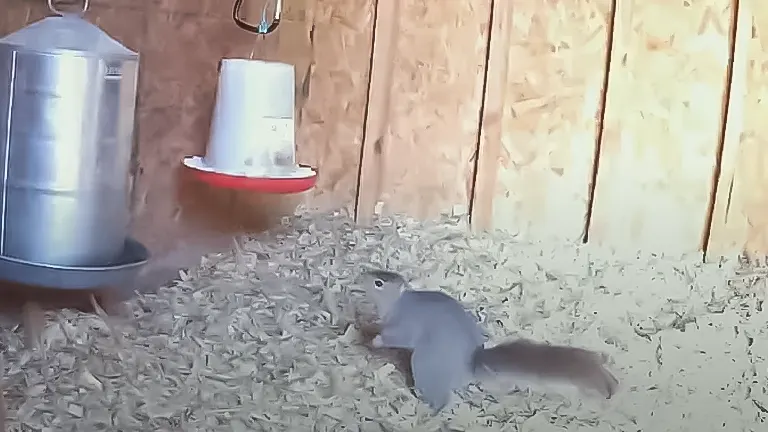
Furthermore, while this method can be a helpful component of an integrated pest management plan, it should not be solely relied upon to control rats. The use of natural predators is best viewed as a supplementary measure, working in concert with other more direct and immediate methods like coop fortification and trapping. This ecological approach, while more passive, contributes to a balanced natural control of pests without the need for chemicals or mechanical traps.
Pros
Encouraging natural predators like owls and cats can help. I installed an owl box near the coop, which proved to be a natural and eco-friendly solution.
Cons
This method is unpredictable and can’t be solely relied upon. Also, not all predators differentiate between rats and your chickens!
Method 4: Poison
The use of poison for rat control in chicken coops is a method that requires careful consideration due to its high effectiveness coupled with significant risks. Rat poison, often available in the form of bait blocks or pellets, contains potent rodenticides that are designed to kill rats after ingestion. The primary advantage of using poison is its efficiency in reducing rat populations, as it can eliminate multiple rodents with minimal daily maintenance.
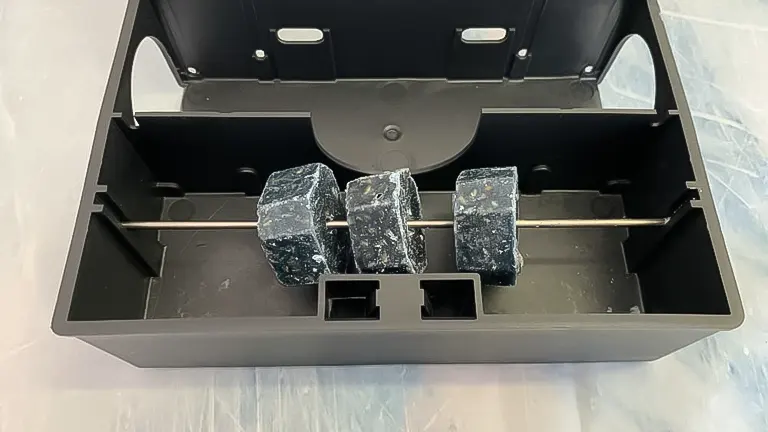
However, the risks associated with this method are substantial. The foremost concern is the potential for accidental poisoning of chickens, other domestic animals, and wildlife. There is also a risk of secondary poisoning, where predators or scavengers that consume poisoned rats can themselves be harmed. This poses not only a moral dilemma but also a threat to local ecosystems. Another critical consideration is the safety of children and pets in the vicinity, as they might inadvertently access areas where the poison is placed.
The use of poison requires strict adherence to safety protocols, such as placing the poison in secure, rat-specific bait stations and ensuring that these are well out of reach of non-target species. Moreover, the disposal of dead rats must be handled with care to prevent any further risk of contamination or spread of disease.
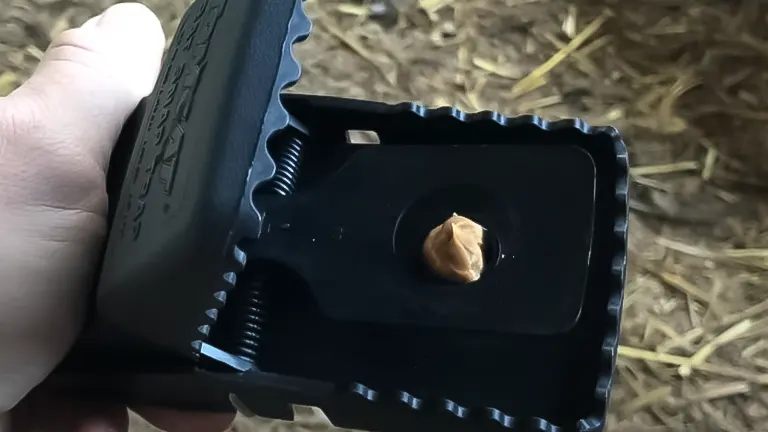
While poison can be a powerful tool in the fight against rat infestations, it should be employed only as a last resort, considering its environmental impact and potential hazards. A more integrated approach, combining safer and more sustainable methods like coop fortification and trapping, is generally recommended for long-term rat management in chicken coops.
Pros
Rat poison is highly effective and requires less daily maintenance.
Cons
It poses a significant risk to chickens, other wildlife, pets, and even children if not carefully managed. There’s also the risk of secondary poisoning.
What Makes Chicken Coops Irresistible to Rats?
Rats possess a highly developed sense of smell, making your chicken coop as enticing as a pizzeria is to us. Your coop’s aroma can draw rats from afar.
Despite having a sturdy fence, rats can find their way in. They can squeeze through gaps in the fence or even leap over it, with an impressive ability to jump up to a meter from a standstill and squeeze through spaces larger than 2cm. Their determination to access the coop is remarkable.
For rats, a chicken coop is a treasure trove of delights. The primary attractions are the chicken feed and droppings. Here are some strategies to reduce this open invitation to rats:
Reducing Rat Visitation in Coops
- Opt for a specialized chicken feeder that minimizes feed spillage. Standard bell and treadle feeders often lead to scattered feed. Using a well-designed feeder, like the Dine A Chook Chicken Feeder from Australia, significantly cuts down on feed waste. Less feed on the ground means fewer incentives for rats.
- Maintain coop cleanliness. Implementing a droppings tray under roosts for easy daily removal can help. A cleaner coop is less attractive to rats.
- Be mindful when feeding scraps. Do this between 10 am and 2 pm, ensuring it’s an amount the chickens can finish by dusk. Excess feed left overnight becomes a feast for nocturnal rats.
- Protect eggs and young chicks. Rats can prey on eggs, and in food-scarce situations, they may attack chicks and even adult hens, typically targeting the neck or head. Regular egg collection and safeguarding young chicks are essential.
- Avoid leaving food scraps on the ground. The aroma of day-old scraps is highly appealing to rodents, so this practice should be stopped to reduce their attraction to the coop.
Decision-Making Factors
- Safety for Chickens and Other Animals: This is paramount. Any method chosen should not pose a risk to your chickens or other pets.
- Effectiveness: The chosen method should significantly reduce or eliminate the rat problem.
- Sustainability: Ideally, the solution should offer long-term effectiveness without constant intervention.
- Humaneness: This is subjective, but for me, it’s important to manage the problem without undue suffering to the rats.
My Top Recommendation
Based on these factors, my top recommendation is a combination of tightening coop security and trapping. This approach balances effectiveness with humaneness and safety for your chickens. Regular maintenance of the coop’s security and strategic placement of traps can manage the problem effectively without the risks associated with poison.
Related Articles:
- Best Bedding For Chickens
- Best Safe Chicken Coop Heater
- 8×8 Chicken Coop Plans
- Turning a Shed Into a Chicken Coop
- How to Make a Chicken Coop Out of Pallets
- Best Sand for Chicken Coop
- How To Insulate a Chicken Coop
- How To Heat a Chicken Coop
- How To Keep Water from Freezing in Chicken Coop
- How to Build a Chicken Coop
- How To Build Chicken Nesting Boxes
Final Thoughts
Dealing with rats in a chicken coop requires a multifaceted approach. No single method is foolproof, but through a combination of preventive measures and trapping, you can significantly reduce the problem. Remember, regular coop maintenance and vigilance are key in keeping these pesky intruders at bay. Stay consistent, and your feathered friends will thank you!
Frequently Asked Questions
- What attracts rats to chicken coops?
Rats are primarily attracted to chicken coops for food, water, and shelter. Chicken feed, leftovers, and even droppings can be food sources, while the coop itself provides a warm, protected environment. - How can I tell if I have a rat problem in my chicken coop?
Signs of a rat infestation include rat droppings, gnaw marks on feeders or the structure, burrows around the coop, and scattered feed. At night, you might hear scratching or squeaking sounds. - Is it safe to use rat poison around chickens?
While rat poison is effective, it poses significant risks to chickens, other animals, and even humans due to the potential for accidental ingestion and secondary poisoning. Safer alternatives are recommended. - Can rats harm my chickens?
Yes, rats can harm chickens, particularly small chicks. They can transmit diseases, contaminate feed and water, and in some cases, directly harm chickens through bites. - What is the best way to rat-proof a chicken coop?
The best way includes sealing off potential entry points with hardware cloth, ensuring the coop and surrounding area are clean and free of food scraps, and possibly elevating the coop off the ground. - Are traps an effective way to control rat populations?
Yes, traps can be quite effective. Snap traps and live traps are commonly used. Placement and regular checking are key to success with this method. - Can natural predators help control rats?
Yes, natural predators like owls, hawks, and cats can help control rat populations, but this method is unpredictable and should be used as a supplementary measure. - How often should I check and clean my coop to prevent rats?
Regular cleaning, at least weekly, is recommended. This includes removing leftover food, cleaning up droppings, and checking for signs of rats or potential entry points. - Can I use ultrasonic repellents to keep rats away?
Ultrasonic repellents are marketed for this purpose, but their effectiveness is widely debated and may vary. They are a non-invasive option but should not be solely relied upon. - What should I do if I find a rat nest in my coop?
If you find a rat nest, it’s crucial to remove it carefully using gloves and clean the area thoroughly. After removal, take steps to secure the coop and consider setting traps to catch any remaining rats.
We’re eager to hear from you! Please share your personal experiences and insights regarding the strategies for getting rid of rats in chicken coops in the comments section below. Your valuable input could greatly assist fellow chicken keepers in tackling this common issue more effectively. Whether it’s a successful tactic you’ve tried or a lesson learned, your contributions could help others make informed and practical decisions in their own battle against these pesky intruders!

Edward Smith
Forestry AuthorWoodworking is about more than crafting; it's a harmonious connection with nature, mastering tools, and preserving our environment. I'm here to share my knowledge and experiences with you, forging a future where we can embrace wood's beauty and utility while safeguarding our forests' health and diversity.



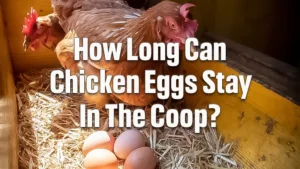


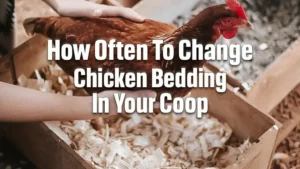


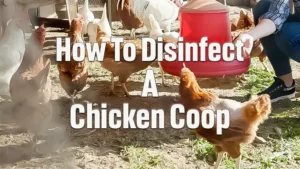


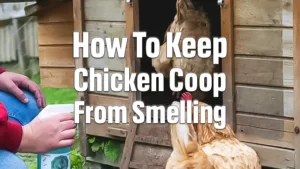
Leave your comment